GCK Elbow — Two-Touch Nut-Tightened Pneumatic Tube Fitting for Compressed-Air Systems
The GCK Elbow is a robust, nut-tightened, two-touch pneumatic tube connector engineered specifically for compressed-air installations where long-term vibration resistance, corrosion resistance, and chemical resistance are required. Designed for low-pressure pneumatic equipment, this elbow-type fitting secures tubing using a clamped nut mechanism and is manufactured from durable plastic for extended service life. This article provides a comprehensive technical review of the GCK Elbow, including detailed specifications, materials and construction insights, installation and maintenance guidance, performance considerations, and recommended applications for engineers and system designers.
Introduction
Pneumatic systems are widely used in manufacturing automation, packaging, material handling, control valves, and other industrial applications. Component selection for pneumatic plumbing directly affects system reliability, maintenance frequency, and overall lifecycle cost. The GCK Elbow occupies a specific niche: it is optimized for low-pressure compressed-air lines where vibration, corrosive environments, or chemical exposure would degrade metal fittings, and where push-fit solutions may not offer sufficient retention under mechanical stress.
The GCK Elbow’s nut-tightened, two-touch design provides a mechanical clamping action that secures the tubing more reliably under vibration than typical push-in connectors while retaining the benefits of plastic construction—lightweight, corrosion-resistant, and cost-effective. This makes the fitting valuable in applications where long-term leak-free operation and chemical resistance are essential.
Technical Overview
The GCK Elbow is a 90-degree pneumatic elbow fitting designed to connect flexible tubing to threaded ports on valves, manifolds, cylinders, or other pneumatic components. Its defining features are a two-touch nut-tightened retention mechanism and plastic body construction. The term “two-touch” refers to the clamping interaction between the nut (external clamp), the ferrule or internal compression element, and the tube surface, providing two points of physical contact that together secure and seal the tube.
Basic Functional Description
Mechanically, the GCK Elbow operates as follows:
- The tubing (selected from metric O.D. sizes 4 mm to 12 mm) is inserted into the elbow’s body until it seats against the internal stop.
- A threaded nut on the exterior is tightened onto an internal ferrule or clamp assembly. As the nut is tightened, the ferrule compresses radially around the tubing, producing an interference seal and mechanical retention.
- The compressed ferrule provides the sealing function and the mechanical bite that resists axial pull-out and vibration-induced loosening. Because the retention is achieved by mechanical compression rather than solely by friction, the connection is more secure under dynamic loads.
Sealing is achieved through the interference fit between the ferrule and the tubing and by the direct contact with the internal sealing surfaces of the body. No external adhesives or secondary sealing are required when used within rated limits.
Performance Envelope
Key operational limits for the GCK Elbow are:
- Media: Compressed air (for air only — do not use for other gases or liquids unless compatibility is confirmed).
- Working pressure: 0–150 PSI (0–9.9 kgf/cm², 0–990 kPa).
- Vacuum: Safe operation down to -29.5 in Hg (-750 mm Hg / ~10 Torr) when properly installed.
- Temperature range: 0–60 °C (32–140 °F).
These limits make the GCK Elbow suitable for typical factory compressed-air systems, pneumatic controls, and low-pressure instrumentation where ambient temperatures and pressures remain within the stated range. The fittings are not intended for high-temperature steam or high-pressure hydraulic fluids.
Specifications and Dimensions
The table below summarizes the common technical dimensions, ordering codes, and relevant performance numbers. Weight figures are approximate and intended for system mass-balancing and packaging considerations only. Confirm exact body dimensions and thread profiles with the supplier before specifying clearance-critical designs.
| Model | Tube Code | Tubing O.D. (mm) | Tubing I.D. (mm) | Thread Size | Max Working Pressure (PSI / kPa) | Vacuum Rating | Operating Temp (°C) | Approx. Weight (g) |
|---|---|---|---|---|---|---|---|---|
| GCK 04-1/8 | 04 | 4.0 | 2.5 | 1/8 | 150 PSI / 990 kPa | -29.5 in Hg | 0–60 °C | ~3 |
| GCK 06-1/8 | 06 | 6.0 | 4.0 | 1/8 | 150 PSI / 990 kPa | -29.5 in Hg | 0–60 °C | ~5 |
| GCK 08-1/4 | 08 | 8.0 | 5.5 | 1/4 | 150 PSI / 990 kPa | -29.5 in Hg | 0–60 °C | ~8 |
| GCK 10-1/4 | 10 | 10.0 | 6.5 | 1/4 | 150 PSI / 990 kPa | -29.5 in Hg | 0–60 °C | ~12 |
| GCK 12-3/8 | 12 | 12.0 | 8.0 | 3/8 | 150 PSI / 990 kPa | -29.5 in Hg | 0–60 °C | ~16 |
| Other Combinations | 04–12 | 4–12 | 2.5–8 | 1/8, 1/4, 3/8 | 150 PSI / 990 kPa | -29.5 in Hg | 0–60 °C | Varies |
Note: The ordering format is typically CK <tube size code> <thread size> — e.g., CK 06 1/8. Common available GCK model codes include: GCK 06-1/8, GCK 10-1/4, GCK 12-3/8, GCK 06-1/4, GCK 10-3/8, GCK 08-1/8, GCK 08-1/4, and GCK 08-3/8. Always confirm thread standard (BSPP, BSPT, NPT, etc.) when ordering for compatibility with mating ports.
Materials and Build Quality
The GCK Elbow is produced from high-performance plastic resins engineered for pneumatic applications. Typical materials used for this class of fittings include:
- Nylon (Polyamide, e.g., PA66): Offers excellent mechanical strength, good chemical resistance, and thermal stability in the operating temperature range. It is a common choice for compressed-air fittings due to toughness and fatigue resistance.
- PBT (Polybutylene Terephthalate): Provides good dimensional stability and electrical insulation; PBT is also chemical-resistant and provides good long-term creep resistance under load.
- Acetal (POM): Known for low friction, tight dimensional tolerances, and superior wear characteristics; often used where smooth internal passageways and precise sealing are required.
Manufacturers may use a single resin or a combination of resins and additives (UV stabilizers, glass fill for stiffness, or lubricants) depending on the specific product variant. The nut and ferrule elements are also typically molded from the same family of engineered plastics or reinforced versions to maintain compatibility and avoid galvanic corrosion that occurs with metal components.
Durability and Mechanical Strength
Plastic fittings like the GCK Elbow are designed to withstand repeated cycles of vibration and mechanical loading. The two-touch nut tightening system disperses clamping forces and reduces stress concentrations that could otherwise lead to cracking in plastic components. Plastics used in these fittings are selected for:
- High fatigue resistance to tolerate compressive and tensile cyclic loads on tubing connections
- Resistance to impact and drop damage during assembly and maintenance
- Dimensional stability to maintain sealing surfaces under prolonged static loads
Chemical and Corrosion Resistance
One of the primary technical advantages of plastic fittings is innate resistance to many corrosive media that degrade metals, such as salt-laden atmospheres, acidic or alkaline cleaners, and certain process chemicals. For compressed-air systems exposed to moisture, salt spray, or chemical contamination, plastic components reduce the risk of rust-based particulate generation and avoid the need for anti-corrosion coatings or sacrificial maintenance.
However, not all plastics are compatible with all chemicals. Solvents like concentrated ketones, chlorinated hydrocarbons, or strong oxidizers may attack some resins. Always consult a chemical compatibility matrix or the manufacturer’s datasheet if the system will see atypical contaminants, solvents, or cleaning agents.
Key Features
- Two-touch nut-tightened connection: Mechanical clamp and ferrule provide robust axial retention and reliable sealing under vibration.
- Plastic construction: Lightweight, corrosion-resistant, and chemically resistant to many airborne contaminants found in industrial environments.
- Wide metric tube compatibility: Available for tube outside diameters from 4 mm to 12 mm, making it suitable for a broad range of flow requirements.
- Standard thread interfaces: Offered with typical thread sizes (1/8, 1/4, 3/8) for easy connection to standard pneumatic ports.
- Suitable for vacuum service: Rated to approximately -29.5 in Hg when properly installed.
- Low leakage potential: Compression-style seal avoids the micro-leak paths common with worn push-fit seals.
- Modular installation: Quick field replacement of individual fittings without the need for special adhesives or adhesives.
Use Cases and Application Examples
The GCK Elbow is designed for low-pressure pneumatic systems where vibration, chemical exposure, or corrosion present reliability concerns for metal fittings. Typical applications include:
- Factory automation and assembly lines: Pneumatic actuators, air cylinders, valve manifolds, and grippers where equipment experiences repetitive motion and vibration.
- Packaging machinery: Air lines for air-knives, suction cups, vacuum blowers and small cylinders where equipment is subject to wash-downs and cleaning agents (verify chemical compatibility).
- Material handling conveyors: Blow-off nozzles, pusher cylinders, and index stations that require compact piping and reliable connections in confined spaces.
- Robotics: End-of-arm tooling pneumatic supply lines where weight reduction and flexibility are important.
- Environmental and outdoor installations: Systems exposed to salt spray or corrosive atmospheres where metal fittings would rust.
- Laboratory and test benches: Control air distribution in test rigs where frequent reconfiguration requires durable, re-usable fittings.
Note: Although the GCK Elbow provides chemical resistance, confirm compatibility for specific food, pharmaceutical, or medical-gas applications. Regulatory approvals and biocompatibility may be required for those sectors.
Flow and Pressure Considerations — Practical Design Guidance
When integrating GCK Elbow fittings into a pneumatic circuit, design engineers should consider how tube size, elbow geometry, and system pressure interact to affect flow performance, pressure drop, and response times for actuators.
Tubing ID and Flow Capacity
The free internal area of tubing and the fitting’s internal diameter determine volumetric flow and pressure loss across the elbow. For a given supply pressure, smaller I.D. tubing (e.g., 2.5 mm I.D. for 4 mm O.D. tubing) will significantly restrict flow versus larger I.D. tubing (e.g., 8.0 mm I.D. for 12 mm O.D. tubing). Select tubing O.D./I.D. to match expected flow rates — consult manufacturer flow charts or perform empirical testing for time-critical pneumatic actuation.
Equivalent Length and Pressure Drop
In pneumatic piping calculations, a 90° elbow adds an “equivalent length” (Leq) to the run for pressure-drop calculations. For small-diameter, low-pressure air lines, use conservative Leq values when calculating pressure losses or when precise actuation timing is required. As a rule of thumb, multiple elbow fittings and abrupt directional changes should be avoided for long runs where flow must be preserved.
Vibration and Dynamic Loads
The GCK Elbow’s nut-tightened configuration is designed to resist vibratory loosening and axial pull-out better than push-in fittings. Nevertheless, in systems with extreme mechanical shock, additional mechanical support such as harness clamps, cable ties, or bracketed routing should be used to reduce lateral forces on fittings and tubing entrances.
Installation Torque and Sealing
Plastic nut-tightened fittings rely on controlled torque during assembly to compress the ferrule without overstressing the threads or body. Recommended installation practice is to hand-tighten the nut until snug and then apply a measured, moderate wrench turn (typically a fraction of a full turn) to engage the ferrule. Avoid over-tightening, which can distort the ferrule or crack plastic components. If a torque wrench is used, limit torque to a range that produces reliable sealing without plastic deformation; consult the manufacturer for exact torque specifications for the selected model and polymer grade.
Comparison with Other Fitting Types
Below is a technical comparison table that positions the GCK Elbow relative to typical alternative fitting styles: metal nut-and-ferrule elbows, push-to-connect (one-touch) plastic elbow fittings, and flared/swaged metal fittings. The comparison focuses on attributes that engineering teams commonly evaluate when designing pneumatic systems.
| Attribute | GCK Elbow (Nut-tightened, plastic) | Metal Nut & Ferrule Elbow (Brass/Stainless) | Push-to-Connect Plastic Elbow | Flared/Swaged Metal Elbow |
|---|---|---|---|---|
| Material | Engineering plastic (corrosion-resistant) | Brass or stainless steel | Plastic (often POM, PA) | Brass, copper, or stainless |
| Vibration resistance | High (nut clamp prevents pull-out) | Very high (metal ferrule bite) | Moderate–low (can disengage under sustained vibration) | Very high (permanent swage) |
| Corrosion resistance | Excellent in corrosive atmospheres | Good; metals may corrode without plating or SS | Good, but depending on resin | Good; metal choice matters |
| Chemical resistance | Good for many chemicals; depends on resin | Susceptible to chemical attack / galvanic reactions | Good for general use | Depends on metal and surface treatment |
| Ease of installation | Moderate (requires nut tightening) | Moderate (wrench tightening) | High (push-in) | Low (requires swaging tools) |
| Reusability | High (disassemble/reuse with new ferrule if needed) | High | High but seals wear over cycles | Low–medium (swaged joints often permanent) |
| Typical cost | Low–moderate | Moderate–high | Low | Moderate |
This comparison highlights the GCK Elbow’s niche: combining the vibration-resistant retention of nut-and-ferrule systems with the corrosion and chemical resistance of plastics, while keeping costs and weight down compared to all-metal alternatives.
Benefits and Limitations
Benefits
- Vibration-resistant connection: Nut-tightened ferrule provides a secure mechanical hold and minimizes chance of axial pull-out under dynamic loading.
- Corrosion and chemical resistance: Plastic construction resists corrosion and many common chemical agents encountered in industrial environments.
- Lightweight and cost-effective: Reduces weight load on machines and is typically less expensive than stainless-steel alternatives.
- Reconfigurable and serviceable: Can be assembled and disassembled without special tools beyond a basic wrench, facilitating maintenance and layout changes.
- Vacuum-capable: Suitable for certain vacuum and suction applications within the stated vacuum rating.
Limitations
- Limited temperature range: Rated only to 60 °C, unsuitable for high-temperature environments or steam lines.
- Material-specific chemical limits: Certain aggressive solvents, concentrated acids, or oxidizers may damage plastic components — confirm compatibility prior to use.
- Pressure ceiling: Rated to 150 PSI; this is appropriate for many pneumatic applications but not for high-pressure or hydraulic systems.
- Torque sensitivity: Over-tightening may crack plastic threads or deform the ferrule; controlled assembly is necessary.
Installation Guide — Best Practices for Reliable Connections
Correct installation is essential to realize the GCK Elbow’s design advantages. The guidance below is intended for technical staff performing installation, commissioning, or maintenance activities.
Preparation
- Verify the tubing material and dimensions: Ensure the tube O.D./I.D. matches the selected GCK model (e.g., 6 mm O.D. tube for GCK 06 variants).
- Cut tubing square: Use a proper tubing cutter to obtain a square, burr-free cut. Chamfer or deburr the inner edge slightly if necessary to prevent damage to the ferrule during insertion.
- Inspect threads and sealing surfaces: Remove any particulate or film from the fitting threads and internal seat area.
Assembly
- Insert tubing fully: Push the tubing into the fitting until it seats against the internal stop. Ensure the tube reaches the depth recommended by the manufacturer.
- Hand-tighten the nut: Rotate the nut by hand until it is snug against the fitting body.
- Apply final tightening: Use a suitable wrench to apply a measured incremental turn — typically a fraction of a full turn beyond hand-tight. Avoid excessive torque. If the manufacturer provides a torque value, use a torque wrench adjusted to that value.
- Check alignment: Make sure the elbow orientation aligns with the desired tubing exit angle and does not place undue bending stresses on the tube.
Leak Test and Commissioning
- Pressurize the system gradually to the intended operating pressure while monitoring for any audible leaks or signs of tube pull-out.
- Perform a soap/bubble test or use a calibrated ultrasonic/leak detector at all fitting interfaces.
- If a leak is detected, depressurize and re-torque the nut as recommended. If leakage persists, disassemble, inspect the tubing and ferrule for damage, and replace components as needed.
- Document the test results and retention torque (if used) for future maintenance reference.
Torque and Tightening Notes
Because the GCK Elbow is molded from plastic, it is sensitive to over-tightening. Use incremental tightening and stop when the connection is airtight and secure. Over-application of torque can cause thread stripping, nut cracking, or ferrule deformation that compromises the seal and leads to premature failure.
Maintenance and Care Guide
Routine inspection and maintenance prolong the useful life of fittings and reduce unplanned downtime. Below are recommended procedures for maintaining GCK Elbow installations.
Periodic Inspection Checklist
- Visual inspection every 3–6 months in typical industrial settings; more frequent inspections in harsh environments.
- Check for external damage: cracks, abrasions, or discoloration indicating chemical attack or UV degradation.
- Verify nut tightness: Re-check hand-tight plus wrench engagement or retained torque if torque was applied during installation.
- Confirm tubing condition: Look for kinking, softening, or embrittlement in the tubing within 10–20 cm of the fitting.
- Monitor for leaks: Use a bubble test or acoustic leak detector on pressurized systems.
Cleaning and Chemical Exposure
If lines are subject to periodic wash-downs or cleaning, ensure that cleaning agents are compatible with the plastic resin. Rinse with fresh water and dry the fittings when possible to avoid accumulation of residues that could promote degradation.
Component Replacement
- Replace ferrules and nuts if reusing fittings is required after disassembly; ferrules can become work-hardened or deformed.
- Replace any fitting that shows hairline cracks or surface crazing; micro-cracks in plastics can propagate under pressure cycles.
- During routine maintenance, consider a preventive replacement interval for critical lines (e.g., annually in high-duty applications) to mitigate unexpected failures.
Safety, Compliance, and Application Limitations
When specifying and using the GCK Elbow, consider the following safety and compliance points:
- Use only with compressed air: The GCK Elbow is intended for air systems; do not use with combustible gases, oxygen service, or hazardous fluid media without explicit manufacturer approval.
- Do not exceed rated pressure or temperature: Operating outside the specified envelope risks component failure and possible system damage.
- Thread compatibility: Verify mating thread standards (BSPP, BSPT, NPT, etc.) to avoid cross-threading and sealing failures.
- Vibration mitigation: Although the GCK Elbow is designed to resist vibration, mechanical supports reducing loads on the fitting further increase reliability.
- Regulatory approvals: For food, pharmaceutical, medical, or breathing-air systems, confirm regulatory compliance, material certifications, and traceability with the supplier.
Ordering, Part Numbering and Inventory Considerations
Ordering the correct part requires specifying the tube size code and thread size in the prescribed order format. The typical order format is:
CK <tube size code> <thread size> — for example, CK 06 1/8.
Common tube size codes and their corresponding tubing O.D./I.D. are:
- 04 — 4 mm O.D. / 2.5 mm I.D.
- 06 — 6 mm O.D. / 4 mm I.D.
- 08 — 8 mm O.D. / 5.5 mm I.D.
- 10 — 10 mm O.D. / 6.5 mm I.D.
- 12 — 12 mm O.D. / 8 mm I.D.
Available GCK model codes (examples) include: GCK 06-1/8, GCK 10-1/4, GCK 12-3/8, GCK 06-1/4, GCK 10-3/8, GCK 08-1/8, GCK 08-1/4, and GCK 08-3/8. When placing bulk orders, maintain a catalog of commonly used sizes in spare parts inventory to reduce downtime — recommended spares include replacement ferrules and nuts for the most frequently serviced sizes.
Real-World Implementation Examples
Below are a few concise case examples that illustrate how the GCK Elbow is used in practice.
Example 1: Robotic End-of-Arm Tooling
A manufacturer of pick-and-place robots installed the GCK Elbow for pneumatic supply lines to vacuum cups on end-of-arm tooling. Benefits realized:
- Reduced mass on the arm due to plastic fittings.
- Robust retention under continuous movement and vibration.
- No corrosion observed after extended production runs in a humid environment.
Example 2: Conveyor Blow-off Manifold
A food packaging line placed blow-off nozzles on a conveyor where daily washdowns were performed. The GCK Elbow, combined with chemically compatible tubing, provided reliable service with minimal maintenance cycles because the plastic fittings resisted the cleaning agents used — after verifying food-contact and regulatory compliance.
Troubleshooting Common Problems
Below are common failure modes and recommended remedies specific to nut-tightened plastic elbow fittings.
- Leak at the nut: Depressurize, disassemble, inspect the ferrule and tube end for damage, re-cut tubing squarely, and reassemble. Replace the ferrule if it shows deformation.
- Axial pull-out under vibration: Confirm that the tube was fully inserted and that the nut was tightened correctly; if recurrent, add strain relief clamps and consider a larger tube size or metal ferrule variant if loads remain high.
- Cracked nut or body: Likely due to over-torque or chemical attack weakening the polymer. Replace the fitting and ensure proper assembly torque; evaluate chemical exposure history.
- Slow leaks or pressure decay: Perform a full leak test on the circuit; check other fittings and connectors, not just elbows, and examine tubing for micro-punctures or abrasion.
Conclusion
The GCK Elbow is a practical, technically robust solution for low-pressure pneumatic tubing installations where vibration, corrosion, and chemical exposure are concerns. Its two-touch nut-tightened design delivers superior retention and sealing compared with simple push-in fittings while retaining the corrosion advantages and light weight of plastic construction. With compatibility for a range of metric tubing sizes, vacuum capability, and a practical working pressure up to 150 PSI, the GCK Elbow is well suited to applications across automation, conveyors, robotics, and laboratory systems.
For system designers and maintenance engineers, the GCK Elbow offers a balance of reliability, ease of service, and resistance to environmental degradation — provided it is installed within the specified pressure and temperature ranges and with proper attention to tubing selection, torque control, and chemical compatibility. As with any pneumatic component, validate thread standards and operating conditions with the supplier during design and procurement to ensure the selected GCK variant matches application requirements.
If you require specific mechanical drawings, exact torque values for a given polymer variant, or certified chemical compatibility tables for the fitting, consult the manufacturer’s technical datasheets or request material test reports from the supplier. Proper specification and installation will deliver long service life and reduce maintenance interruptions in pneumatic systems that employ the GCK Elbow.

 Tiếng Việt
Tiếng Việt
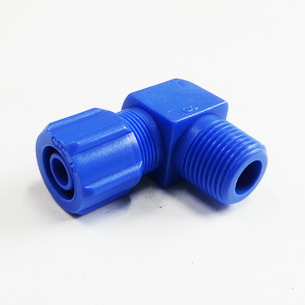

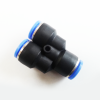
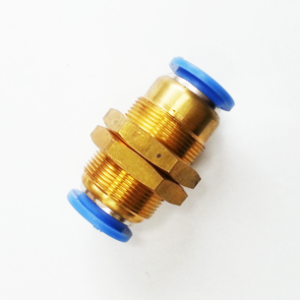
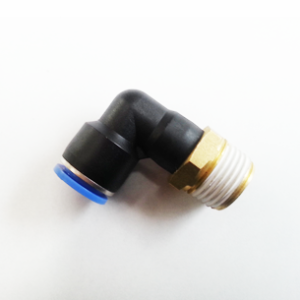
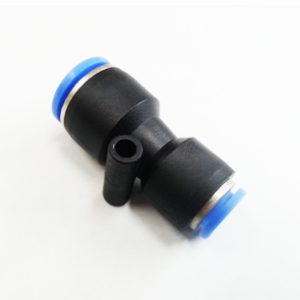

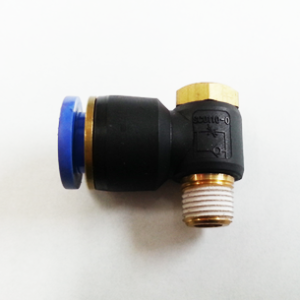
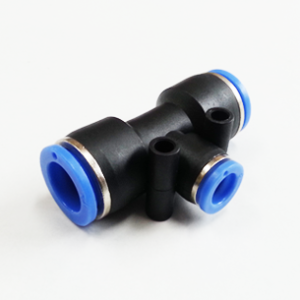
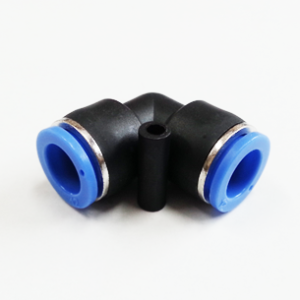
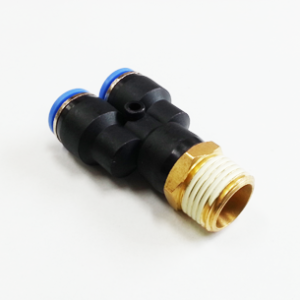
Reviews
There are no reviews yet.